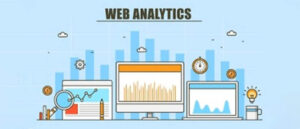Introduction
A/B testing, often known as split testing, is a powerful strategy for optimising digital marketing efforts that involves compared two versions of a website, email, or other marketing materials to see which works best. This data-driven approach allows marketers to make informed decisions and improve conversion rates, user engagement, and overall effectiveness. Some real-world examples of A/B testing success illustrate its potential impact.
Airbnb: Improving User Engagement
Objective: Airbnb aimed to increase user engagement by optimizing its homepage design.
A/B Test: They tested two versions of their homepage. Version A featured a large, vibrant image with a search bar, while Version B had a similar layout but included a text overlay highlighting the benefits of using Airbnb.
Results: The version with the text overlay (Version B) saw a 3% increase in user engagement. This minor tweak led to significant improvements in user interaction, demonstrating the power of clear, value-driven messaging.
Optimizely: Boosting Form Submissions
Objective: Optimizely wanted to increase the number of free trial sign-ups on their website.
A/B Test: They tested their original form (Version A) against a simplified version (Version B) with fewer fields and a more straightforward design.
Results: The simplified form (Version B) resulted in a 39% increase in form submissions. By reducing friction and making the process more user-friendly, Optimizely significantly boosted its conversion rate.
HubSpot: Enhancing Call-to-Action (CTA) Performance
Objective: HubSpot sought to improve their blog’s CTA buttons’ click-through rate (CTR).
A/B Test: They experimented with two different CTAs. Version A used the text “Click here to learn more,” while Version B used “Get your free eBook.”
Results: The CTA with the more specific offer (Version B) achieved a 28% higher CTR. This case study highlights the importance of clear, compelling CTAs in driving user action.
Electronic Arts (EA): Increasing Email Open Rates
Objective: EA wanted to increase the open rates of their promotional emails.
A/B Test: They tested two subject lines. Version A was generic, while Version B included a personalized touch with the recipient’s name.
Results: The personalized subject line (Version B) led to a 20% higher open rate. Personalization proved vital in capturing the audience’s attention and encouraging them to open the emails.
500Friends: Maximizing Customer Retention
Objective: 500 friends aimed to improve customer retention by optimizing email marketing campaigns.
A/B Test: They tested two email designs. Version A was text-heavy, while Version B visually engaged with images and concise text.
Results: The visually engaging email (Version B) resulted in a 22% increase in click-through rates. This case study underscores the importance of visual elements in email marketing to keep recipients engaged and encourage clicks.
Google: Improving Ad Performance
Objective: Google sought to enhance the performance of its AdWords campaigns.
A/B Test: They tested different versions of ad copy. Version A had a straightforward, factual approach, while Version B incorporated emotional language to appeal to users’ feelings.
Results: The emotionally driven ad copy (Version B) generated a 15% higher click-through rate. This finding highlights how emotional appeal can significantly enhance ad performance.
Basecamp: Increasing Sign-Ups
Objective: Basecamp wanted to increase the number of sign-ups for their project management software.
A/B Test: They tested their original homepage (Version A) against a new version (Version B) that included customer testimonials and trust badges.
Results: The new version with testimonials and trust badges (Version B) saw a 14% increase in sign-ups. This demonstrates the impact of social proof and trust elements in convincing potential customers to take action.
Unbounce: Enhancing Landing Page Conversions
Objective: Unbounce aimed to improve the conversion rates of their landing pages.
A/B Test: They tested two variations of their landing page. Version A had a single call-to-action button, while Version B included two different CTA buttons targeting distinct segments of their audience.
Results: The landing page with two CTA buttons (Version B) resulted in a 27% increase in conversions. Unbounce captured a broader range of leads by catering to different user intents.
Conclusion
Performing A/B tests is an extremely useful tool for optimising numerous areas of digital marketing. These case studies demonstrate that even small changes, such as tweaking headlines, modifying CTAs, or simplifying forms, can significantly improve user engagement and conversion rates. Businesses can achieve better results and drive growth by systematically testing different elements and using data to guide decisions. As these examples show, the key to successful A/B testing lies in understanding your audience, making informed hypotheses, and continually iterating based on the insights gained.
To know more about Digital Marketing, Please visit https://paypercampaign.com





